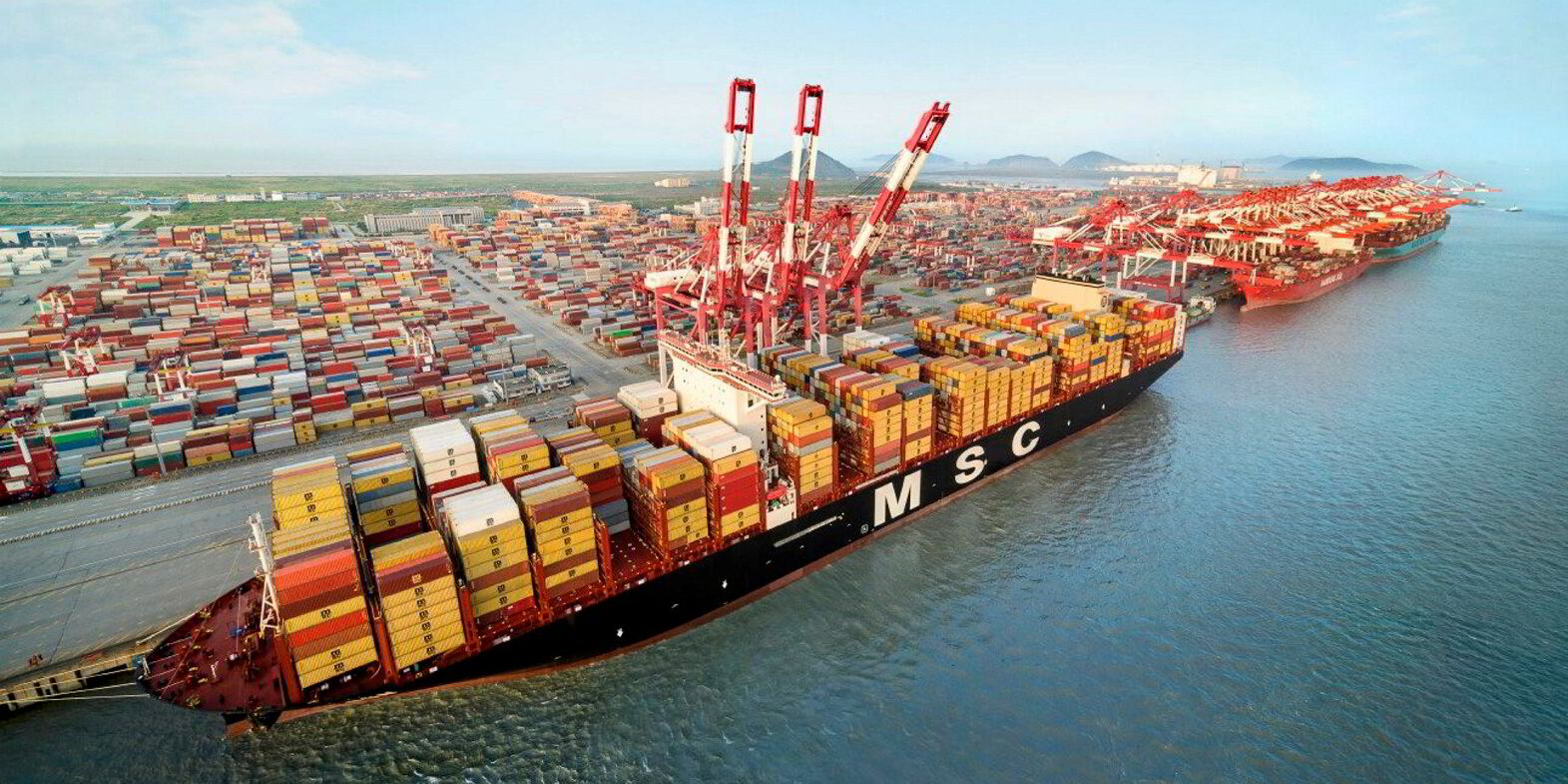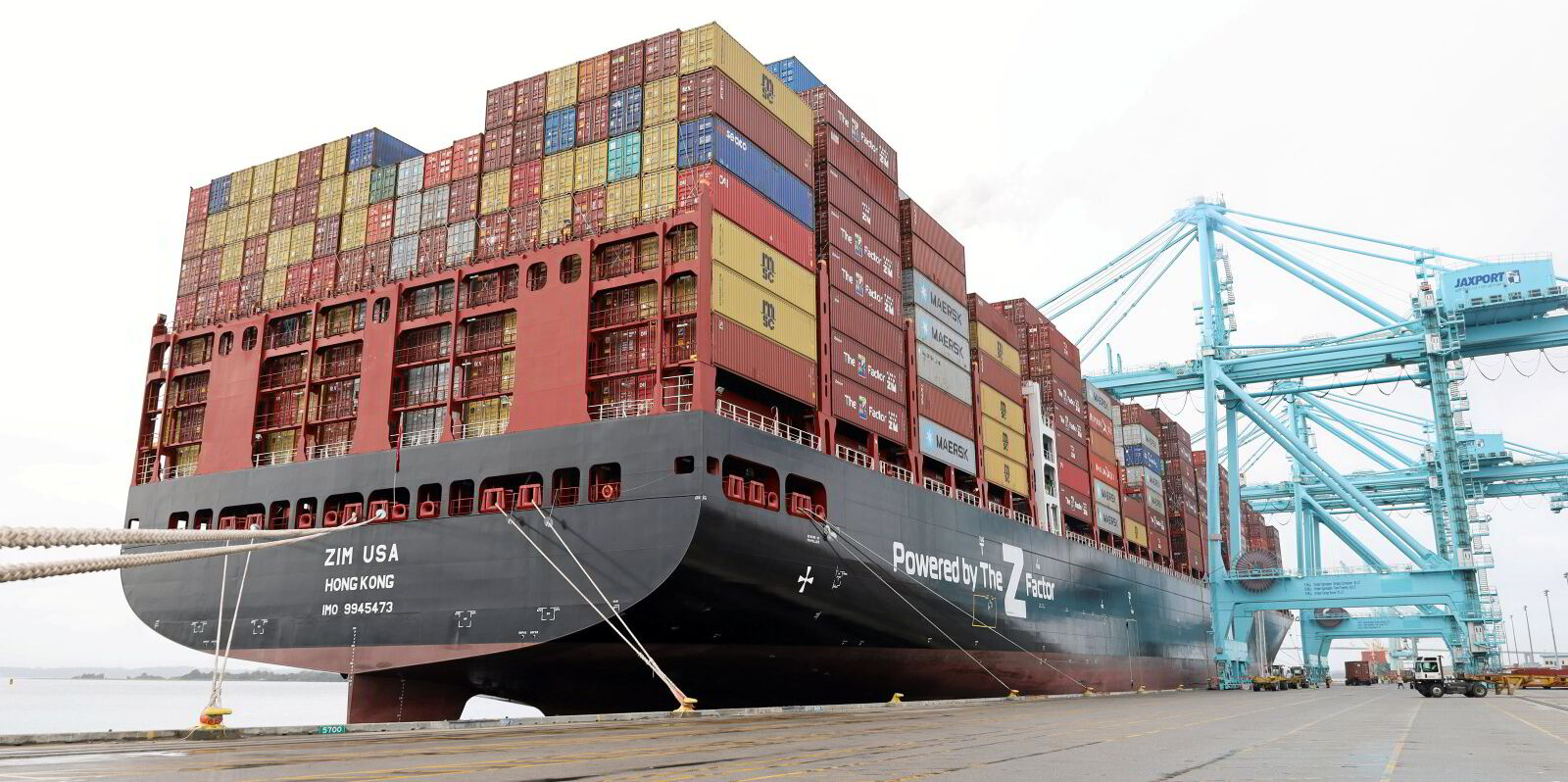Spot rates on container trades out of Asia continue to fall despite the onset of peak season, as lines respond to strong demand by reinstating or launching new services.
Drewry’s World Container Index declined by 2% to $5,806 per 40-foot equivalent unit over the week, ending a continuous run of rate increases that began in late April.
The drop in rates suggests that general rate increases (GRIs) introduced by carriers are failing to stick.
Some carriers attempted to push for higher spot rates in the mid-July GRI, while others offered lower rates for the first time in months, according to freight rate portal Xeneta.
“This is important because it means shippers can play carriers off against each other to secure a better spot rate,” it noted.
The only main east-west trade where rates did not fall in the past week was from Asia to the US East Coast, where the prospect of a major port strike later in the year is keeping demand high.
That trade could also come under pressure as lines inject capacity onto the transpacific and Asia-Europe trade, where demand and spot rates surged in the past two months.
MSC reinstates transpacific service
MSC Mediterranean Shipping Company said this week that it planned to reinstate a stand-alone service on the transpacific.

The Asia-US East Coast Liberty service would provide additional capacity for “the ongoing robust demand in the transpacific market”, it said.
The first sailing will be the 4,432-teu MSC Houston V (built 2010) from Singapore on 9 August, followed by the 6,494-teu BF Hamburg (built 2009) a week later.
That comes alongside a wave of newbuilding deliveries including the 15,372-teu Ever Mega (built 2024), which was delivered this week to Evergreen Marine from South Korea’s Samsung Heavy Industries.
It will join the Ocean Alliance Asia-US West Coast service, replacing vessels of 12,000 teu.
Carriers are tapping into a strong rebound in demand resulting from the diversions of vessels around the Cape of Good Hope.
Yet the arrival and deployment of additional tonnage is taking its toll, with capacity having risen on most trades between April and July.
“The signs of supply catching up with demand even with the Cape of Good Hope diversions in place is a potential alarm bell,” Maritime Strategies International says in its monthly container review.
That is a concern with a further 1.7m teu expected to enter service in the coming three quarters, it added.
For now, liner operators remain optimistic, reflected by their willingness to maintain an elevated level of capacity, argues Danish analyst SeaIntel.
On the Asia to US West Coast trade, carriers so far plan to blank 3.9% of the total capacity, it said.
“Given this strong capacity growth and the relatively low blank sailings level, it suggests that the carriers are bullish for the peak season on this trade lane,” SeaIntel said.
Peak season woes?
Yet the fact that rates are falling during container shipping’s peak season remains a concern.
Sustained fleet growth and potentially softer liftings suggest that vessel utilisation levels may come under pressure in the second half, argues Braemar container analyst Jonathan Roach.
Peak season goods will probably keep demand relatively elevated into September, and congestion remains an issue, Freightos analyst Judah Levine said, adding that a gradual decline in freight rates could be more likely than a rate collapse as demand eases.
As long as Red Sea diversions continue, prices are unlikely to go below levels seen during the demand lull in March and April.
Even then, freight rates were still about double 2019 levels, Levine added.






